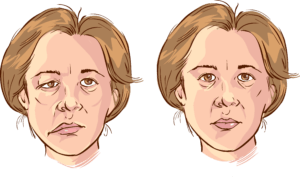
Facial Paralysis, also known as Bell’s Palsy, can be caused by many different reasons. Some people are born with one or both sides of the face not working, either because of trauma during delivery or because of a rare conditions such as Mobius Syndrome, Melkersson-Rosenthal Syndrome, and hemifacial microsomia. Facial paralysis can also be caused by an infection, or trauma to the face or a fracture to the temporal bone (the skull bone behind the ear). Finally, tumors in the parotid gland, middle ear and cerebellopontine angle can compress the nerve and cause it to not function.





